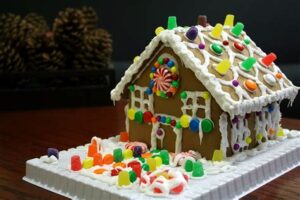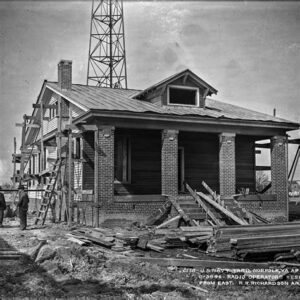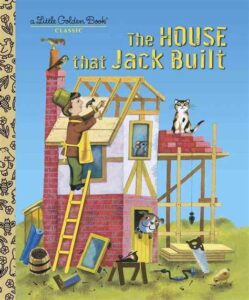Explore the architectural style, materials, innovative features, and preservation challenges of 1930s houses in this comprehensive guide. Discover their enduring popularity today!The 1930s was a transformative decade in architecture, marked by a unique blend of innovation and tradition that left a lasting impression on the landscape of American homes. As the country navigated the economic challenges of the Great Depression, the design of houses reflected a mix of practicality and artistic expression. From the distinctive architectural styles that characterized this era to the materials and construction techniques that defined them, 1930s houses offer a fascinating glimpse into the values and aspirations of the time. In this blog post, we will explore the architectural styles, innovative design features, and the widespread popularity of these homes, while also addressing the challenges faced in preserving these cherished historical structures. Join us as we delve into the rich legacy of houses built in the 1930s and appreciate their enduring significance in modern life.
Architectural Style of 1930s Houses
The architectural style of houses built in the 1930s is characterized by a blend of various influences that reflect the socio-economic conditions of the time. This decade witnessed a shift towards more functional designs, moving away from the ornate styles of the previous eras. Common elements include simple lines, Hipped roofs, and symmetrical facades, which became prevalent across many neighborhoods.
Several distinct styles emerged during this period, including Art Deco, which emphasized geometric patterns and sleek designs, and Streamline Moderne, known for its curved forms and horizontal lines. Many 1930s houses also featured Colonial Revival elements, showcasing shuttered windows and classic columns, often serving as nods to America’s architectural history.
To illustrate the diversity of 1930s architecture, here’s a comparison of popular styles from that era:
| Architectural Style | Key Features |
|---|---|
| Art Deco | Geometric shapes, bold colors, and decorative motifs |
| Streamline Moderne | Curved lines, flat roofs, and an emphasis on horizontal elements |
| Colonial Revival | Symmetrical facades, gable roofs, and classic detailing |
The 1930s houses not only reflect the design trends of their time but also encapsulate the transitioning tastes of homeowners seeking both comfort and style. These styles have left a lasting impression on the landscape of American residential architecture.
Materials Used for Construction
The 1930s was a significant decade in the realm of architectural design, particularly in the construction of residential homes. During this time, a mix of traditional and innovative materials came into play, reflecting both the economic climate and the artistic trends of the era.
Commonly used materials included brick, stucco, and timber. Brick was favored for its durability and aesthetic appeal, often seen in Colonial and Mediterranean styles that dominated the landscape. Stucco was particularly popular in regions with warmer climates, providing a clean, smooth finish that was easy to maintain. Meanwhile, timber remained a staple for framing and decorative elements, exuding warmth and a sense of home.
In addition to these materials, the technological advancements of the time allowed for the use of concrete and steel in innovative ways. This shift not only broadened the possibilities for structural design but also facilitated the construction of larger and more elaborate homes. The integration of these materials marked a distinct evolution in 1930s house construction
Innovative Design Features
The 1930s was a decade that marked a significant evolution in architectural design, particularly evident in the houses constructed during this era. One of the most prominent innovative design features of 1930s houses was the use of open floor plans, which created a sense of spaciousness and fluidity within the living spaces. This marked a departure from the often compartmentalized layouts of earlier homes, promoting a more communal lifestyle.
Another remarkable aspect was the incorporation of modern materials and construction techniques. For example, the use of steel frame construction allowed for larger windows and thus increased natural light, while the introduction of innovations like concrete block brought about not only durability but also unique aesthetic options. Many homes featured stucco exteriors, which became a signature look of the period.
Additionally, architectural details such as art deco elements, cantilevered roofs, and varied rooflines provided a striking visual appeal. The integration of indoor and outdoor spaces through large patios and gardens reflected a growing trend toward blending living areas with nature, enhancing the overall quality of life for residents. Overall, the innovative design features of 1930s houses not only reflected the changing societal norms but also laid the groundwork for future architectural developments.
Popularity and Spread of 1930s Houses
The 1930s were a pivotal decade for housing in many parts of the world, especially in urban areas. The economic pressures of the Great Depression led to a unique blend of affordability, aesthetic appeal, and functionality in residential architecture.
During this time, there was a noticeable shift towards Art Deco, Streamline Moderne, and Colonial Revival styles, which resonated with a wide audience seeking both modernity and comfort. The influence of these styles can be seen in the simplicity and elegance of homes built in this era.
Moreover, the popularity of 1930s houses was amplified by the rise of suburban development. Affordable mortgages and the availability of mass-produced construction materials facilitated the spread of these homes across the country. As families sought more living space, 1930s homes became synonymous with the American dream, offering a combination of charm and
Challenges in Preserving Historic 1930s Houses
The 1930s was a pivotal decade in architectural history, giving rise to distinctive house styles that reflected the cultural and social sentiments of the time. However, preserving these historic homes poses various challenges.
One of the primary challenges is the deterioration of materials used in the original construction. Many homes were built with wood, brick, and plaster, which are susceptible to aging, decay, and weather-related damage. As these materials wear down, homeowners must decide whether to restore with original materials or consider modern alternatives, leading to potential loss of authenticity.
Another critical issue is the zoning laws and regulations that often impede renovations or restorations. Many cities have strict historical preservation laws that may complicate efforts to upgrade infrastructure, install modern amenities, or comply with current safety standards. This results in a delicate balance between maintaining historical integrity and meeting modern living requirements.
Additionally, there is a growing challenge associated with funding and investment. Many owners of historic 1930s houses may lack the necessary financial resources to undertake extensive restoration projects, thus leaving these architectural treasures at risk. Community support and involvement often play a significant role in fostering preservation efforts.
| Challenges | Details |
|---|---|
| Deterioration of Materials | Original materials like wood and plaster are prone to damage. |
| Zoning Laws | Regulations may restrict renovations while preserving historical accuracy. |
| Funding Issues | Lack of financial resources can hinder restoration projects. |
In summary, the preservation of historic 1930s houses is a complex endeavor influenced by material, legal, and financial challenges. As we continue to cherish these structures, recognizing and addressing these obstacles i
Frequently Asked Questions
What architectural styles were popular in houses built in the 1930s?
The 1930s saw a mix of architectural styles including Art Deco, Streamline Moderne, Colonial Revival, and Craftsman.
How did the Great Depression affect house construction in the 1930s?
The Great Depression led to reduced budgets for construction, resulting in smaller, more cost-effective homes, and an emphasis on functionality.
What materials were commonly used in 1930s house construction?
Common materials for 1930s houses included brick, wood, stucco, and concrete, with many homes featuring decorative elements like terracotta tiles.
Are there any notable design features of 1930s homes?
Notable design features include rounded corners, flat roofs in Art Deco styles, arched doorways, and decorative moldings.
How can one identify a house built in the 1930s?
Houses from the 1930s often have specific details such as casement windows, decorative stonework, and distinct rooflines that reflect the architectural trends of the era.
What is the significance of the 1930s in American housing history?
The 1930s marked a transition in American housing, with a shift towards more affordable homes in response to economic challenges and changes in societal needs.
Do houses from the 1930s hold any historical value today?
Yes, many houses from the 1930s are considered historic due to their architectural significance and as reflections of the social and economic conditions of that era.





